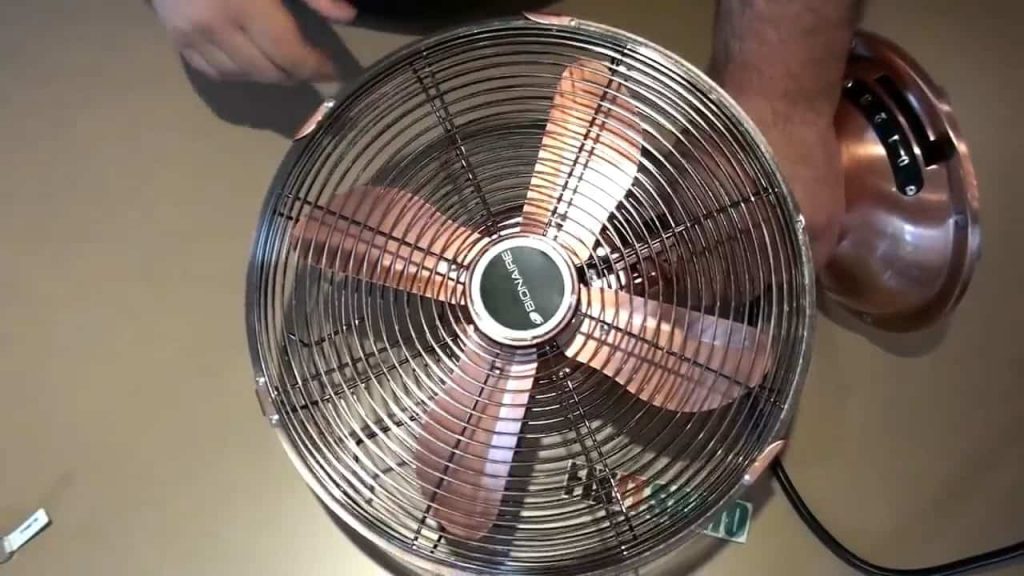How To Turn A Fan Into An Ac

As heatwaves intensify across the nation, families are scrambling for affordable cooling solutions. Learn how to quickly transform a standard fan into a makeshift air conditioner with readily available materials.
This guide provides a step-by-step method for creating a DIY cooling system, offering a temporary reprieve from soaring temperatures without breaking the bank.
Materials You'll Need
Gather these essential supplies to get started:
- A standard electric fan (box fan or pedestal fan works best)
- A large bowl or bucket
- Ice (cubes or frozen water bottles)
- Water
- A small towel (optional, to catch drips)
Step-by-Step Instructions
Follow these instructions carefully to build your DIY air conditioner:
1. Position the Fan and Bowl
Place the bowl or bucket in front of the fan. Ensure it's close enough to the fan to allow airflow to pass over the ice.
2. Add Ice and Water
Fill the bowl with ice cubes or frozen water bottles. Pour a small amount of water over the ice to help distribute the cold.
3. Position the Fan
Adjust the fan so that the airflow is directed across the surface of the ice and water mixture.
4. Turn On the Fan
Switch on the fan to a medium or high setting. Feel the cooler air being blown from the fan as it passes over the ice water.
5. Monitor and Refill
As the ice melts, periodically drain some of the water and add more ice. This will maintain the cooling effect.
6. Optional: Use a Towel
If you notice any condensation or dripping, place a small towel under the bowl to protect the floor or surface.
Important Safety Considerations
Prioritize safety when building and using your DIY air conditioner.
Electricity and Water: Ensure the fan's electrical cord is not in contact with water to prevent electric shock. Never submerge the fan in water.
Fan Placement: Place the fan on a stable surface to prevent it from tipping over. Keep it away from flammable materials.
Air Circulation: Ensure the room is well-ventilated. Do not use this setup in a completely enclosed space for extended periods.
Efficiency Tips
Maximize the cooling effect of your homemade air conditioner with these tips:
Frozen Water Bottles: Using frozen water bottles instead of ice cubes can prolong the cooling effect as they melt slower.
Fan Direction: Experiment with different fan angles to find the optimal airflow direction for your room.
Room Size: This method is most effective in smaller rooms. For larger spaces, consider using multiple setups.
Cost Comparison
The cost of this DIY solution is significantly lower than purchasing a traditional air conditioning unit. According to a recent survey by the Energy Information Administration (EIA), the average cost of a new window air conditioner ranges from $150 to $500, not including installation. In contrast, the materials for this DIY project typically cost less than $20, assuming you already own a fan.
The National Low Income Energy Assistance Program (LIHEAP) reports that energy costs are a significant burden for low-income households, making affordable cooling solutions crucial. This DIY method provides a low-cost alternative for staying cool during heatwaves.
Expert Opinion
"While not a replacement for a professional air conditioning system, this DIY approach can offer temporary relief from the heat," says Dr. Emily Carter, an environmental scientist at the University of California, Berkeley. "It's a practical solution for individuals seeking a quick and inexpensive way to lower their indoor temperature."
Dr. Carter emphasizes the importance of safety precautions, stating, "Always prioritize electrical safety and ensure proper ventilation when using any DIY cooling method."
Ongoing Developments and Alternatives
Researchers are continuously exploring alternative cooling technologies. Evaporative coolers, also known as swamp coolers, are another option, but they are most effective in dry climates. Government agencies and non-profit organizations offer energy assistance programs to help families afford cooling costs. Contact your local Department of Energy for more information on available resources.


















